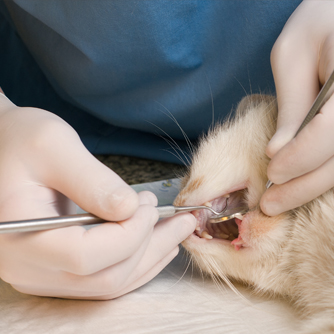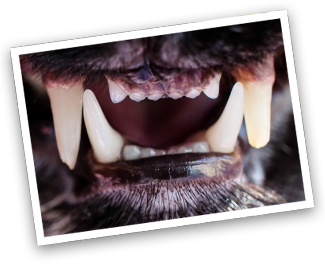Teeth Cleanings at Punta Gorda Animal Hospital

In veterinary medicine (unlike human dentistry) we rarely perform prophylactic teeth cleaning. Most of our patients present to us with significant dental disease. This means we need to perform a comprehensive oral exam, assessment and treatment - NOT a "prophy". This involves dental x-rays, probing for pockets, hand and ultrasonic cleaning above and below the gum line, polishing the teeth and in some cases extractions.
Once the patient has been examined, preanesthetic diagnostic tests performed and the patient is anesthetized, an initial exam of the teeth and oral tissues will be done. Before placement of the cuffed endotracheal tube, the occlusion or “bite” can be evaluated for orthodontic abnormalities and notations made on the dental record for future reference.
After intubation, a quick exam of the oral cavity noting major problems such as calculus deposits, exposed roots, gingival recession, mobile teeth, oral masses, malpositioned teeth, missing teeth, discolored teeth, and worn or fractured teeth can be made. Whole mouth dental radiographs will then be taken to evaluate the each tooth below the gum line. The next step is supragingival scaling - the removal of plaque and calculus above the gumline, or gingival margin. This can be accomplished in a variety of ways: calculus forceps for heavy deposits, hand instruments, or power instruments such as sonic and ultrasonic scalers. The teeth will then be polished with a fine grit polishing paste to smooth surface irregularities which helps retard the biofilm of plaque from returning.
Once the teeth are evaluated, cleaned above the gumline, polished, probed, and radiographed, any areas deemed as having disease below the gumline can be addressed. This may mean cleaning the root surfaces via root planing with hand instruments, cleaning out any periodontal pockets, and extractions. After the teeth have been cleaned, fully evaluated, and any disease treated, the patient is recovered from anesthesia and allowed to go home. Now that the teeth are clean, this is an excellent time to start home prophylaxis or prevention of the return of plaque. There are several options to help reduce plaque accumulation, but brushing is still the gold standard.

